As said by comedian Elayne Boosler, “We have women in the military, but they don’t put us in the front lines. They don’t know if we can fight, if we can kill. I think we can. All the general has to do is walk over to the women and say, ‘You see the enemy over there? They say you look fat in those uniforms.”
For decades, women weren’t allowed in the military. In the past, women were expected to keep house, not fight in wars. Though today women are allowed to join a military branch, they aren’t allowed to be Navy Seals nor can they be put on the front line of a battle. However, they do make up 20% of today’s military force in the U.S. Advances towards equality in the military have been made, but still there are some discrepancies. Below is a list of ten women who have changed the face of the military:
10. Joan of Arc
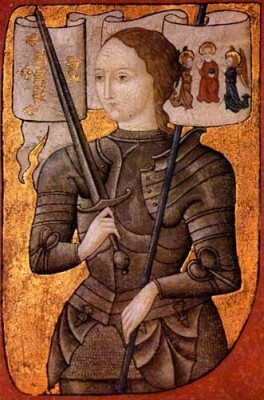
Though she grew up as a peasant girl in eastern France, today, Joan of Arc stands as a symbol of the power that women can have, even in the military, despite the fact that many did, and still do doubt a woman’s success in a militaristic career. During the Hundred Years’ War, Joan of Arc helped lead the French army to numerous victories in several different battles. Of course, Joan had to adapt to the life of being a male, which led her to cut her hair and wear men’s clothing. While many didn’t believe in her divine guidance that was calling her to help the French become victorious and gain their homeland from the British, she was in fact able to succeed. In fact, she was sent to the siege at Orleans by King Charles VII and was able to end the siege in just 9 days, but not until she was able to convince and overcome the arrogance of the long-time generals.
Joan Van Arc was highly successful in the beginning, winning several different battles against the Burgundians and even able to go to Chinon to speak with the King. However, she was captured on May 30, 1430 and was sent to prison in Rouen, France, where she was tried and convicted of heresy. In the end she was sentenced to death by burning at the stake. However, in June 1456, Joan was given a posthumous trial in which she was found not guilty and was even considered a martyr and was canonized. Today, she is a saint, heroine, and has been given the title “Maid of Orleans.”
9. Elizabeth C. Newcume
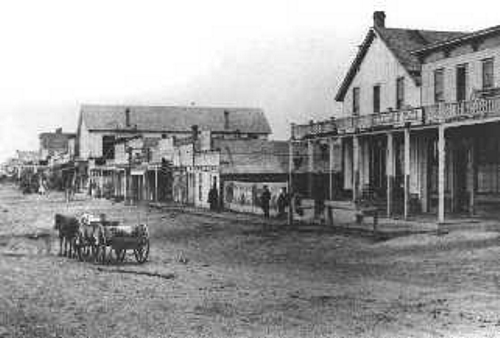
If you’ve ever wanted to read the life of a modern-day Joan of Arc, Elizabeth C. Newcume definitely comes pretty close. While she didn’t have any divine spirit calling her to fight, in September of 1847, Newcume made her way into the military at Fort Leavenworth in order to fight in the Mexican-American War. As a woman she needed to find ways to fit in, so she, just like Joan of Arc, dressed herself in male attire. Newcume was able to successfully battle against Native Americans in Dodge City, though she was eventually exposed to be a woman ten months later. Once it was made public that she was a woman, she was quickly discharged and was never allowed back in.
In July 1848, Newcume was able to receive some sort of thanks for her duties in the military. Through a private act of Congress approved on July 19, 1848, Newcume was able to receive a land warrant for 160 acres. Not only was she given land, but she was also given the pay equal to that of a soldier that was in battle for ten months with an additional three months of payment. Not much is known of Newcume after she was discharged due to a lack of government documents with information about her. (Photo: 1850’s Dodge City, Kansas)
8. Opha M. Johnson
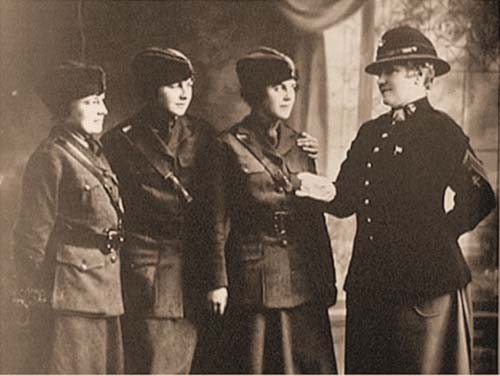
Opha M. Johnson got her chance to make history on August 12, 1918 when the Secretary of the Navy publically granted total authority for females to enroll for clerical duty in the Marine Corps Reserve. With the news of this, Johnson wasted no time and the next day her name was on the list. Throughout the duration of WWI, only 304 more women enlisted. Most of these women were given jobs involving cooking, cleaning, learning to become nurses, and acting as secretaries. At the time, the women who enlisted were “freeing a man to fight.” Many of the women who took over these jobs allowed for more male soldiers to be sent to France.
Opha M. Johnson, the first woman to enlist in the Marine Corps, was the first of the 18,000 women who enlisted in the Marines during WWII. In fact, women made up about half of the personnel at various bases throughout the U.S., as most of the men enlisted were sent to the west coast to fight against the Japanese.
7. Loretta Walsh
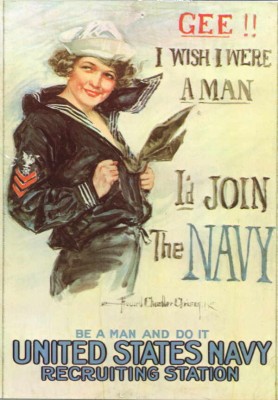
Born in Philadelphia, PA, on April 22, 1896, Loretta Walsh stands as the first woman in the U.S. to enlist in the Navy. By 1917, WWI had been going on for many years and Germany had just announced its plans to re-use unrestricted submarine warfare upon the Allies, including ships flying the American flag. With this said, the German u-boats ruined four American ships, killing fifteen people. Because of this, the U.S. merchant ships were then armed and told to attack any u-boats if necessary. All of this action attracted Walsh to enlist, and on March 17, 1917 she did so. A few days later, the eighteen year old became the first female Chief Yeoman. Once armistice was declared, Walsh was put on inactive reserve, but still carried out her duties as a yeoman.
Even though women had been serving in the Navy decades before Walsh ever did, she was the first to have identical pay and benefits as the men. Those who enlisted before she did often worked as nurses and were treated as civilians, not military personnel. Walsh stands as the first of 13,000 women who would go on to enlist in the Navy. Today she is a very important piece of female history as well as naval history.
6. Oveta Culp Hobby
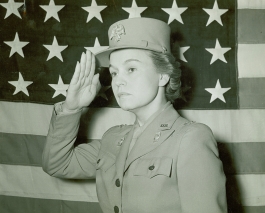
Colonel Oveta Culp Hobby stands as the first woman to be awarded the U.S. Army Distinguished Service Medal, which she received in 1945. She was born in Killeen, Texas and attended Mary Hardin Baylor College for Women as well as the University of Texas at Austin to achieve two separate degrees. She soon married William Hobby who was an ex-governor of Texas as well as a publisher of the Houston Post. Hobby was given the job as one of the newspaper’s editors and often focused on the War Department’s Women’s Interest section. However, during the war manpower was falling short, so Hobby decided to join the Women’s Army Corps. These women were the first to wear uniform after the military nurses. She became a colonel and was soon awarded the Distinguished Service Medal, the first woman to ever receive the medal.
Hobby continued to be politically active after her time in the Army Corps. At the time, President Eisenhower elected her to be the president of the Federal Security Agency. She later worked for several different government agencies. In time she went back to working as an editor and, soon after taking care of her dying husband, died in 1995. Hobby has so much importance that there is a school in Texas named after her, as well as a quote of hers engraved into the WWII Memorial located in Washington, D.C.: “Women who stepped up were measured as citizens of the nation, not as women…this was a people’s war and everyone was in it.” (Photo by USAMHI)
5. Elsie S. Ott
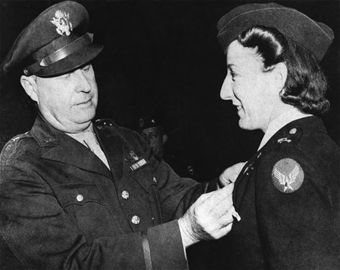
Though many other females on the list are nurses, Lieutenant Elsie S. Ott was a specialized flight nurse. What makes her so important is the fact that she took part in the first intercontinental air evacuation flight in January 1943. The most surprising fact is that Ott had no sort of formal training in air evacuation and had never flown in an airplane before. Stationed at the 159th Station Hospital at Karachi, on January 26, 1943 she was told to prepare herself for the daunting task of taking care of five patients while in flight. Ott didn’t let this new unknown task allow for failure. For six days she took care of each patient until the plane arrived in Washington, D.C. By ship or some other sort of transportation, this journey would have taken months.
Despite having to complete an unfamiliar task without any type of training, Ott succeeded and was rewarded for her great efforts. She was given the first Air Medal that was ever presented to a female and she was also given the opportunity to undergo formal flight nurse training. Not only did she properly take care of each patient, she paid money out of her own pocket to pay for their meals, and even found the time to write very detailed suggestions for flying patients from one place to another. Some of her recommendations included having readily available oxygen on planes as well as a small first-aid kit, and Ott even suggested a change in uniform for nurses, as a skirt was not very practical for the required duties.
4. Cordelia E. Cook

One of the many medically inclined females on the list, Cordelia E. Cook served as an Army Nurse Corps during WWII and stands as the first woman to receive two awards for her actions during the war: the Bronze Star and the Purple Heart. Cook was stationed in Italy and was able to successfully perform her duties as a nurse during a time of tough battles and swarms of wounded and dying soldiers.
In 1943 First Lieutenant Cordelia E. Cook was awarded the Bronze Star, making her the first woman to ever receive such an award. Soon after, she was also given the Purple Heart, making her the first woman in history to ever receive two very honorable awards for her time and efforts given during WWII.
3. Margaret Corbin
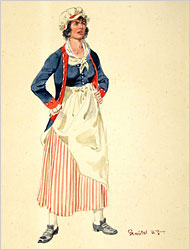
Margaret Corbin fought in the American Revolutionary War, despite the status of women during her time. Born on November 12, 1751, Corbin lived the life of a normal woman of that era until she married John Corbin in 1772. They both fought alongside the hundreds of men battling against the British troops, most notably at Fort Washington in Manhattan. Though John was enlisted in the First Company of Pennsylvania Artillery, Margaret was not, but she was known as a camp follower, which was highly common for those who had husbands in the military. Her main role was to cook, clean, and provide for the soldiers; basically a housewife away from home.
Once her husband and others were put into battle, Margaret went as well. She helped alongside her husband in firing the cannon until he was injured and died. Bravely, she was able to successfully take over the job of firing the cannon. Margaret didn’t come out unharmed: she was hit in her jaw, chest, and arm, and eventually had to surrender due to her injuries. She then moved to Philadelphia in 1779 and was granted money, the amount equaling to the pay of a soldier in battle for half a month. With this, she became the first woman to ever receive pension. She is also the first and only Revolutionary soldier to be buried at West Point cemetery. (Image above, artist: Herbert Knotel)
2. Annie G. Fox
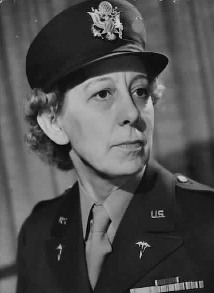
Annie G. Fox, born on August 4, 1893, was the first woman in the military to receive a Purple Heart for her courageous and outstanding performance in the Army Nurse Corps. Though the award was canceled due to a change in requirements, most notably the fact that to be given the Purple Heart, you have to be injured, she was still given the Bronze Star, which is almost always given for an act of bravery. Fox played a big role in helping U.S. soldiers during the attack on Pearl Harbor. Here, Fox was the First Lieutenant and Chief Nurse at Hickam Field, Oahu, Hawaii.
As a nurse she was of course trained to take care of the injured and dying, but it is said that she bravely continued her job, even while extremely heavy bombardments were still taking place. She was able to properly administer anesthesia and was even able to teach the civilian volunteer nurses how to properly dress wounds. Fox was definitely calm under pressure and completed very meritorious acts for which she was given the Purple Heart. During WWII, about 964,409 Purple Hearts were awarded. Today, there is an estimated number of 287 Purple Hearts that have been given to women in the armed forces.
1. Mary E. Walker
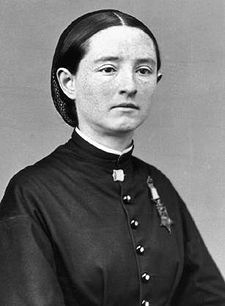
Born in Oswego, New York into an abolitionist family, Mary Walker today stands as the first and only woman in the entire military force to have ever received the Congressional Medal of Honor for her actions and duties during the Civil War. While she didn’t start off in the military, Walker was known for pushing for women’s rights as well as dress reform. Before the Civil War broke out, Walker was the only female in her class to graduate with a medical degree from Syracuse Medical College. Soon after getting her degree, the war broke out and Walker volunteered to join the Army as a medical officer, but was given a stern “no.”
Though discriminated against because of her gender, Walker pushed on, becoming the assistant surgeon in the Army of the Cumberland in 1863. During this time she was able to modify an officer’s uniform in order to properly travel alongside with soldiers. She was then made assistant surgeon to the 52nd Ohio Infantry but was captured in 1864 by the Confederates and released four months after. She then worked in Tennessee at a woman’s and orphan asylum. On November 11, 1865, she was awarded the Medal of Honor. It was taken away in 1917 (after she didn’t match up to the set standards at the time), but reinstated in 1977 posthumously.
source: http://www.toptenz.net/top-10-women-who-changed-the-face-of-the-military.php
